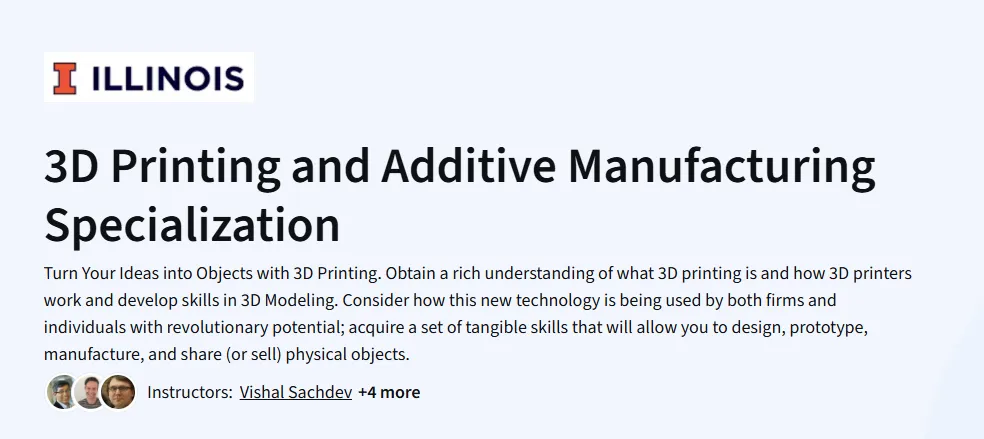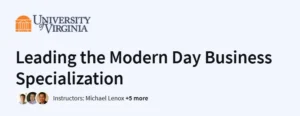What will you learn in 3D Printing and Additive Manufacturing Specialization Course
Grasp foundational and advanced principles of additive manufacturing (AM)
Learn how to design parts specifically for 3D printing technologies
Explore various AM processes and materials used in industry
Apply 3D printing in real-world business and engineering contexts
Analyze the economics, applications, and future of AM technologies
Program Overview
Course 1: Introduction to Additive Manufacturing
⏳ 3 weeks
Topics: History, basic principles, AM process categories
Hands-on: Case-based learning with examples from aerospace, automotive, and healthcare
Course 2: Additive Manufacturing Processes and Materials
⏳ 3 weeks
Topics: Material extrusion, powder bed fusion, photopolymerization
Hands-on: Compare techniques through process-mapping assignments
Course 3: Digital Manufacturing and Design
⏳ 3 weeks
Topics: CAD modeling, slicing software, design workflows
- Hands-on: Work with design software to prepare parts for 3D printing
Course 4: Applications of 3D Printing in Industry
⏳ 3 weeks
Topics: AM use in aerospace, medicine, automotive, consumer goods
Hands-on: Industry-specific application case studies
Course 5: Design for Additive Manufacturing (DfAM)
⏳ 3 weeks
Topics: Topology optimization, part consolidation, light weighting
Hands-on: Create a DfAM concept from design to prototyping
Course 6: Economics and Future Trends of Additive Manufacturing
⏳ 2 weeks
Topics: Cost models, scalability, customization, sustainability
Hands-on: Evaluate the ROI and feasibility of AM in a business setting
Get certificate
Job Outlook
High demand in industries such as aerospace, healthcare, automotive, and prototyping
Roles: Additive Manufacturing Engineer, Product Designer, Industrial Engineer
Salary potential: $65K–$120K+ depending on specialization
Great prospects for freelancers, engineers, and product innovators
Specification: 3D Printing and Additive Manufacturing Specialization
|
FAQs
- Basic CAD knowledge improves learning outcomes but isn’t mandatory.
- Focuses on foundational additive manufacturing principles.
- Covers design workflows suitable for beginners and professionals.
- Explains real-world industrial applications.
- Prepares learners for hands-on projects in 3D printing.
- Covers material extrusion, powder bed fusion, and photopolymerization.
- Explains properties and applications of each material type.
- Teaches process mapping and comparison of AM techniques.
- Includes hands-on assignments for applied learning.
- Helps evaluate technology choices for real-world projects.
- Case studies in aerospace, automotive, and healthcare.
- Explains industrial adoption and best practices.
- Demonstrates prototyping and part design for functional use.
- Prepares learners for additive manufacturing roles.
- Highlights ROI and feasibility assessments for businesses.
- Covers topology optimization, part consolidation, and light-weighting.
- Guides learners from conceptual design to prototyping.
- Emphasizes design strategies for functional and economic efficiency.
- Hands-on exercises reinforce practical application.
- Supports creating production-ready 3D printed components.
- Roles: Additive Manufacturing Engineer, Product Designer, Industrial Engineer.
- Industries: Aerospace, healthcare, automotive, prototyping.
- Salary potential: $65K–$120K+ depending on specialization.
- Opportunities for freelancers and product innovators.
- Strengthens resume with technical and strategic AM knowledge.





